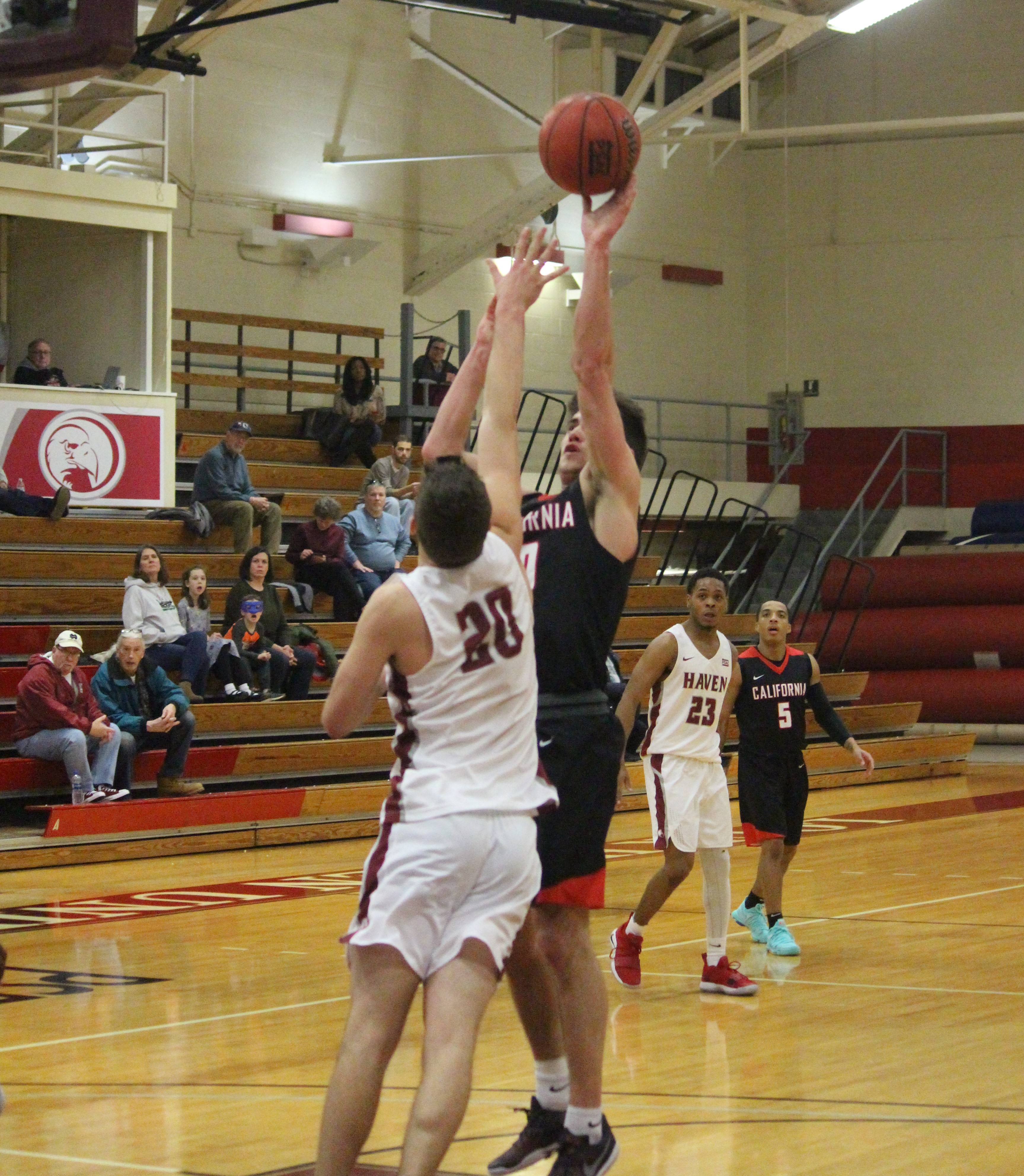PLAYING COLLEGE ATHLETICS

Many of our participants dream of playing their respective sport at the next level. For some, that dream has been with them for many years while for others they may begin to look at the possibility of college athletics as their high school career progresses to their junior and senior years. Either way, the Athletics Department of the Upper Dauphin Area School District encourages our participants to strive for attaining the next level. However, it is important for all participants to realize that playing college athletics is a challenging venture that requires a lot of effort and dedication both on and off the field, court or mat (even more so than high school athletics). In addition, each participant must understand that the National Collegiate Athletic Association (NCAA) requires prospective college student-athletes to achieve certain academic requirements prior to participation at the collegiate level. It should be noted that certain math and science courses taken at Upper Dauphin Area are not accepted by the NCAA for meeting mathematics guidelines. Athletes wishing to compete at the next level should meet with the guidance counselors and Athletic Director to ensure that NCAA academic requirements are being met and to ensure that they understand the process that is involved.
If you feel passionate about playing a college sport, contact your schools’ guidance counselor and athletic director and allow them to guide you through the beginning stages of becoming a college athlete. Going through the process without guidance can lead to issues down the road that delay or prevent you from being able to play college athletics.
Becoming a college student-athlete is a process. It begins with pre-recruitment and extends into your first year of college. The Playing College Athletics section contains a description of the process required as well as some tips and guidelines to consider as you go through the process.
The information contained in the Related Information section contains additional information for those planning to become student-athletes in college. Each link is related to one of the key areas identified in the Playing College Athletics section.
The most exhausting part of playing college athletics is often figuring out where to start. It begins with pre-recruitment and figuring out what you truly want to do in your future. You have to make challenging decisions that will impact your life for years to come. The most effective strategy to use is asking yourself questions that need to be answered. What are you best at? Do you enjoy it? Could you see yourself doing it for years to come? Finding these answers may not be easy, but they’re essential for you to make those difficult decisions in your near future.
Even if you view being an athlete as the most important aspect of college, deciding on your major is still the most prominent decision you’ll make that will affect your college career. Research the career path you would like to take in life, and figure out which major is recommended. If your dream job is uncommon, it’s often worth looking into taking a double major, or a minor with your major. It adds extra work to each day, but teaches you to manage your time efficiently and will allow you to stand out. Coaches value academics more than you think, and doing extra work academically is a way for you to gain an advantage over other athletes.
After deciding on your choice of major and feeling confident that college is for you, getting recruited is the next crucial step that you will have to take. Create a highlight reel of what you feel are your best plays from your most recent season. Organize your highlights by separating them between different phases of your sport (offense vs. defense). Try to put in plays that might not be as impressive as you would like, but define your character and style of play. This method catches the eye of coaches watching the film and gives them an honest idea of who they’re watching. Using HUDL and YouTube are the most effective ways to allow coaches to watch your plays throughout the season and get your name out there. When doing this, make sure you contact coaches and try to encourage them to watch, and always remember to put your contact information at the beginning or the end of your highlights (name, phone number, email address). Many colleges provide a recruitment questionnaire on their respective athletic team internet page. Going through the questionnaire and answering questions honestly is a great way to get your information out to coaches as well.
Once you’ve completed your side of the pre-recruitment process, the pressure is put on collegiate coaches that have watched your highlights. They have to decide whether or not they’d like to have you on their team, or if they are willing to take the risk of passing up on you. If a coach contacts you and lets you know they are interested in you, the decision making for you begins again. The first step you should take is view the schools website, and figure out what you might like or dislike about the school. Research the school on several web pages, and see what others have to say about it. Being able to research the schools coaching staff is also a valuable tool that you should take advantage of. Find out what each coaches past experience was, and what they value in their athletes. If the schools website and coaching staff seem to interest you, it’s worth scheduling a visit to the school to get a first person view of what it is like. When visiting the college, talk to current players to get different perspectives about what it’s like being a college-athlete at the school. Make sure to write down what you liked and disliked about the school when you were on your visit, to allow you to compare it to other colleges. If another school shows interest in you, repeat these steps, and always remain open to visiting as many colleges as possible.
After completing your visits, send in your academic information to each college you toured and are interested in. Be sure to include your best SAT/ACT score and your official transcript, and include any other information that schools might ask for. Find the schools official website and fill out the application. Completing the NCAA Eligibility Center form is also required for anyone wanting to play in a collegiate sport at the Division I or Division II level. After applying to each school, reevaluate each report that you wrote down, and create a list of your highest ranked schools from top to bottom. Once you’ve finished applying, it can often take colleges several weeks to get back and let you know if you have been accepted or not, so don’t panic if they take extra time to review your application.
Assuming you received acceptance letters from multiple schools, you then have to evaluate each college and make the decision on where you would like to attend. The decision process is only as difficult as you make it. It can be extremely stressful, especially if you have several schools interested in you. Talking to your family and taking time out of your day to think about it is crucial. Let your family know what you think the best school for you would be, and give your reasoning as to why you think they are the best fit for you. Your family may or may not agree, but remind them that the final decision should be yours.
When you are confident that you know where you want to go, tell your family first and let them know you are confident in your decision. Let the coaches from the college know that you would like to attend their school and that you’re excited to be a part of the team moving forward. Talk to your high school athletic director shortly after, and make sure you set up a meeting to sign your letter of intent.
Once you’ve committed, take time to reflect on the steps you took to make your decision, and celebrate with your friends and family. Stay in contact with the coaches, and figure out when practice times are in the future. Even though you just committed, you have to look ahead to the school year. Schedule your classes around practice times, and contact your academic counselor if you need assistance. Look into clubs and extracurricular activities that you could involve yourself with to stay busy each day. It’s also helpful to contact current players on the team and ask for any advice they might have for classes, or anything you should do before you arrive on campus.
MOVE IN DAY! When you arrive on campus, meet up with your coaches and teammates whenever possible, and try to get comfortable with everyone. Figure out where and when your classes are, and prioritize your school work. Within your first few weeks, you should develop an everyday schedule to allow you to stay on top of all your work and practices. Manage your time effectively, and always stay ahead in your classes. The most important thing you can do is GET HELP when you need it. Whether it be classwork, practices, socializing, or eating right, there’s always people that are willing to help if you ask. Make sure you develop a healthy eating habit to give yourself an edge over other athletes on your team. Three or four meals a day is essential. Maximize your protein, carbohydrate, and water intake, and eliminate junk food to maintain a healthy diet and stay active throughout the day.
Here’s a few final tips for every athlete. Make yourself the best student-athlete you can be, and remember to value academics as much as you do athletics. Be yourself, but get out of your comfort zone to make yourself stand out. Remember your morals and don’t let college change who you are or what you’re about. Surround yourself with individuals who only want you to get better, and eliminate those who don’t believe in you. Keep in touch with family and friends back home, and remember the work it took for you to get as far as you did.
The following are links to sites outside of the Upper Dauphin Area School District Web site and the UDASD is not responsible for content on these sites.
Figuring Out What You Want In Life
Exploring Careers and College Degrees
Dos and Don’t of Highlight Tapes
Tips for Searching College Web Sites
Being a Productive College Student
Being a Productive Student-Athlete






